
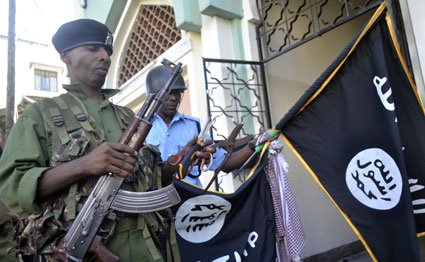
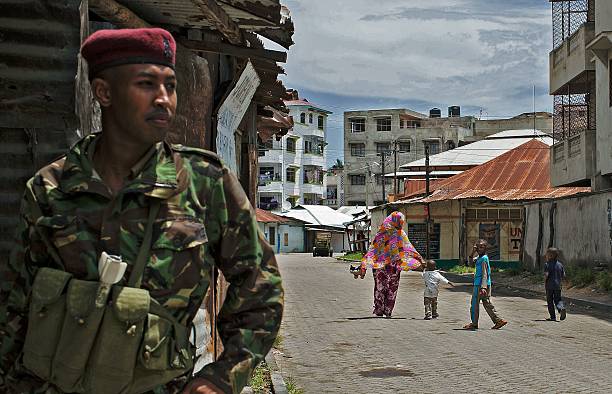
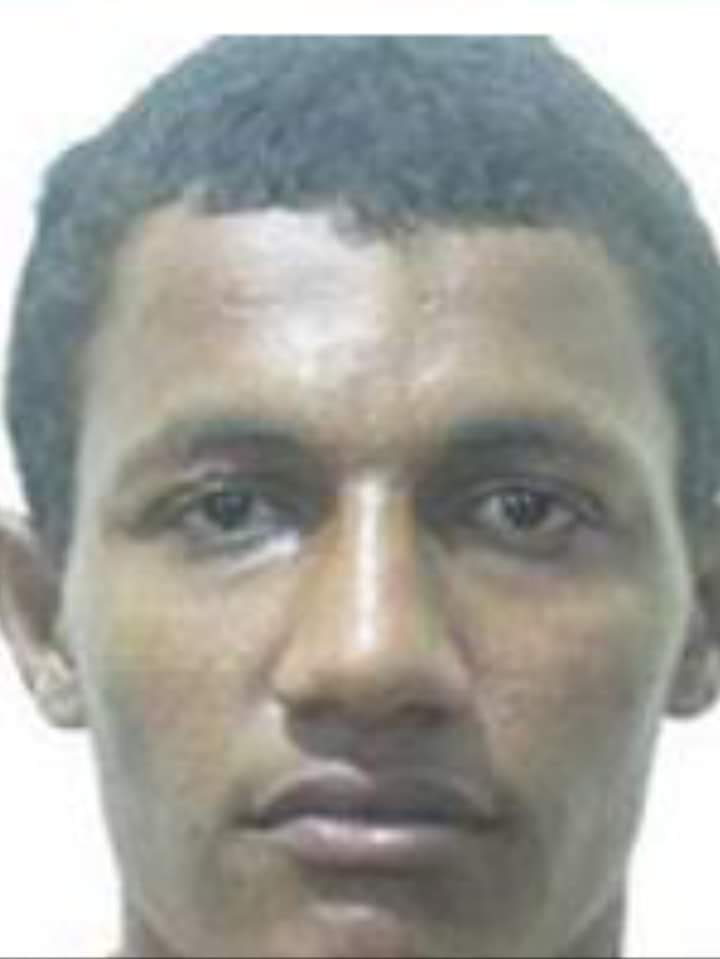
The bomber who blew himself up outside a Nairobi hotel in January 2019, launching an attack that killed 21 people, was already so well-known to Kenyan police that they had emblazoned his face across billboards under the slogan “WANTED: DEAD OR ALIVE”.
Mahir Khalid Riziki was barely 20 when he joined a radical Islamist cell that assassinated police officers and moderate clerics in his home town of Mombasa, officers said.
The mosque at which he prayed and frequently visited in the coastal Kenyan city funneled recruits to the Somalia-based Islamist group al Shabaab, which claimed the January 2019 attack in Nairobi.
Riziki, who was 25 when he died, fled after a deadly police raid at the mosque in 2014. His years as a fugitive shed light on the difficulties of tracking militant suspects across East Africa at a time when al Qaeda-linked al Shabaab is seeking to broaden its pool of recruits and carry out more attacks in other nations. Borders are porous, the enemy is crafty and intelligence sharing is often ad hoc. Warnings may be too vague or too late.
Riziki’s journey spanned at least two East African nations that share borders with Kenya.
“After he disappeared, we monitored him to Tanzania, then later to Somalia, where he went quiet until he made a surprise appearance in the Dusit [hotel] attack,” a retired Kenyan counter-terrorism officer told Reuters.
Like others interviewed, he did not want to be identified discussing a sensitive ongoing investigation.
Kenyan authorities did not respond to queries about whether they had requested help tracking Riziki. But the retired officer said they had contacted Interpol, the international police network.
Interpol had no red notice – an international alert – for Riziki on its website. A spokesman declined to say why, citing a policy not to discuss specific cases. Tanzanian authorities also would not comment on Riziki’s case.
Somali intelligence officials told Reuters they usually received little information from Kenya. But they said they warned Kenya in November about a plot to attack an unknown target involving five men – the same number who attacked the Nairobi hotel and surrounding offices.
Kenya did not want to pay for information preferring to engage in their own spying while leveraging on international intelligence networks, one Somali official reasoned that it was not possible to get more details from sources within al Shabaab without money.
Slender, chisel-faced Riziki often prayed at Mombasa’s Musa mosque, a newly renovated building whose green and white minaret is surrounded by a jumble of small shops. The mosque was a hotbed of extremism in the lead-up to the 2014 raid, authorities said, although now the leadership has changed.
Kenyan police said Riziki was influenced by two of the mosque’s former imams who were gunned down in mysterious circumstances, Sheikh Aboud Rogo and Abubakar Sharif, also known as Makaburi, who they said recruited for al Shabaab.
Yusuf Mohammed, a 54-year-old shopkeeper, occasionally attended the mosque with Riziki. He said the young man was dazzled by its leaders, even as their extremism repelled more moderate Muslims.
“He with many other youth really idolised Rogo and loved his preachings,” Mohammed told Reuters. “They spoke about him all the time.”
When authorities raided four mosques in Mombasa following their links to radicalisation of youth in 2014, police said they had made a “major” step in the fight against terrorism.
The mosques – Masjid Musa, Masjid Sakina, Masjid Swafaa and Masjid Mina – located in Majengo and Kisauni were then temporarily shut down and opened later after an agreement between security agents and local Muslim leaders.
By then, police believed they had dismantled terror cells that were the breeding grounds for terrorists. It was after the raid that hundreds of youths from Mombasa who had been radicalised were forced to flee to hideouts.
The radical teachings had by that time spread to Kwale County, Kilifi County and Lamu County, where a number of youths were also recruited.
Many, according to police reports, ended up in Somalia to join the Al-Qaeda affiliated terror group Al- Shabaab. After a few years of training, the recruits, most of whom are well trained,sneaked back into the country to lure their peers into the group.
The situation came to a deadly head during a period where several clerics with links to extremism, security officers, innocent civilians and moderate clerics perceived to have with links with the security agencies were shot to death over a period of 2 years (2012-2014). At the time jihadi activities and counter terrorism operations were significantly scaled up in Kenya’s port city of Mombasa.
Reign of Terror in Mombasa
Police identified, Majengo, Kisauni and Likoni areas as the bedrock of Islamic extremism in Mombasa where radical clerics were using the pulpit to urge youths to take up arms and fight moderate Muslim preachers and Christians who they refer as ‘infidels’. Several nightclubs, bars, churches, religious gatherings and public transport vehicles were attacked using grenades by the extremist youth killing many innocent civilians.
Tourists were not spared in these killings. On July 6, 2012 a Russian tourist was shot and killed while touring the historical site of Fort Jesus in Kibokoni, in Mombasa.
Six days later, on July 12, a German tourist was also gunned down near Mlango wa Papa in the same area, heightening fears that tourists were being targeted by the terrorists. Police linked the two incidents to two men on a motorbike.
On November 2, a gang of about 15 youths armed with machetes attempted to invade the Nyali Military Barracks killing a soldier on sentry duty. However soldiers reacted swiftly, seven members of the gang were killed.
On August 26, unknown gunmen shot and seriously injured Mombasa DCIO Ndumba Thangarani in Tudor, Mombasa.
On October 11, a police officer who was manning a popular casino along Haile Selassie Avenue in Mombasa, was shot dead by two unknown gunmen.
The Mombasa County Commissioner linked the killings to Al Shabaab.
The then Likoni MP blamed the assassinations on criminal gangs, adding that the incidents “have brought the county’s economy to its knees.’
By May 2014, the United States, United Kingdom, France and Australia began issuing travel warnings to their citizens in Kenya. This had an immediate impact on Kenya’s tourism industry, as European visitors left the country and hotel establishments were consequently forced to lay off staff. The U.S. also reduced its staff levels at its Nairobi embassy. In June 2014, the U.K. likewise shut down its Honorary Consulate in Mombasa over security concerns.
For years Mombasa had been a fertile recruiting ground for al-Shabaab and al Qaeda working through family and neighborhood ties, radical mosques and salafist clerics. These leaders portrayed the conflict across the border in Somalia as jihad, and for many radicalized youth in Mombasa that had an energizing appeal. “ During a bloody period Al Shabaab recruits brought terror to the Kenyan public, machine gun assaults and grenade attacks upon church congregations, pubs, soccer halls, church crusade events, public transport buses and other public spaces, killing civilians and targeting security officers for assassination culminating in the Westgate Attack. Jihadi’s became reckless and boisterous taking over moderate mosque’s and openly declaring war on the Kenyan state and it’s people.
Sheik Juma Ngao of the Kenya Muslim National Advisory Council described the wanton recruitment at the time as “human trafficking in the name of jihad”. He alleged each young man crossing the border earned the recruiter the equivalent of US$1,150. And, he added, “they don’t go for the scholars, they go for the poor.”
There had also been growing friction between clerics splintered into several organizations in Mombasa, based on ideological conviction, and the growing danger of being perceived as on the “wrong” side. “Moderates” accused “radicals” of deliberately grooming young men for combat in the name of Islam, while the Salafists condemned the silence and lack of indignation from their co-religionists when one of them is arrested or killed.
A senior cleric said: “When we went into dialogue we didn’t understand what the youth perspective was… You can’t divorce from this perceived discrimination and marginalization of the region. We had only been exposed to one side [of the argument]. So the government needs to encourage inter- and intra-religious dialogue.”
“They were open that they were for jihad and that they will die for it,” said Ngao, who was at a meeting to foster dialogue. “They said (salafists) ‘If you don’t support us, leave us alone, don’t touch us. But if you touch us, we’ll kill you’.”
The spate of killings by the extremists pushed Kenyan society to the edge. Several people lost their lives in the deadly war, among them:
Alyaan Mohamed
Kilifi, Kenya:
Alyaan Mohamed, who was a licensed gun owner was shot in the head when a man stormed his house on a Sunday evening and opened fire on him then fled without taking anything.
The Malindi OCPD said the victim was assassinated in an attack that occurred at around 8.30pm.
“We are told the man did not utter any word but he brandished a pistol and shot him once in the head,” the OCPD said adding that the bullet went through the skull and exited injuring the victim’s brother-in-law, who was with him, on his left leg.
The OCPD added that the shooter escaped on foot. “We believe it is an assassination as at the time of the shooting the victim who was a police informer was armed with his licensed pistol and the suspect did not steal his gun, mobile phone or money,” he said.
Mohamed and his unnamed brother-in-law were rushed to the Tawfiq hospital in Malindi town where the victim was soon after pronounced dead. The surviving relative was treated and discharged.
The killing came barely four months after the killing of two other individuals with links to Kenya’s security apparatus
Faiz Mohamed
The body of Faiz Mohammed, a madrassa teacher in Malindi and a close friend of another victim Ahmed Bakshueni, was found dumped on Mamburui beach in Magarini in early December. According to the police, he was kidnapped by people suspected to have been radical Muslim youths in the Ngomeni area, they chopped off his head and dumped his body in the Indian Ocean. He is said to have been working as a double agent infiltrating the terror group on behalf of security agents. Al-Shabab accused him of betrayal for giving information to local and international security agencies.
Ahmed Abdalla Bakshueni
THREE gunmen shot dead the former police reservist and licenced gun holder at 8.30 a.m about 200 meters from the Malindi police station.
Ahmed Abdalla Bakshueni had just parked his Nissan XTrail SUV when a motorcycle stopped and two men alighted and approached his vehicle. One pulled out a pistol and shot him three times in the chest, ribs and head. They then fled on the motorcycle.
Reports indicated that Bakshueni was on a terrorist hit list because he was an informer for the FBI, Kenyan Anti Terrorism Police Unit and the CIA. He was a member of the wealthy Bakshueni family that has substantial property holdings in Malindi. A security guard who witnessed the shooting from a nearby shop said the gang did not steal anything.
“The deceased had just stopped opposite our shop when three youthful men on a motorbike stopped a few meters away from where he had parked. Two of them alighted from the motorbike. Upon reaching near his car one drew a pistol and shot him thrice, leaving him for the dead,’’ he said.
Police had a hard time conducting their crime scene investigation due to hundreds of onlookers who gathered at the scene. The body was taken by Tawfiq Ambulance for a swift burial preparation according to Islamic precepts.
The Malindi CID chief, visited the scene and said police were trying to establish the motive of the killing “We have launched a manhunt for the suspects. I am on the ground with my team trying to track the killers,’’ he said. Other witnesses said the killers appeared to have been trailing the deceased. The killing was captured by CCTV. A few hours later counter terrorism agents went to work, poring over the captured grainy video, triangulating call signals, pushing their informers, embedded double agents and undercover agents for information. By the end of the day they had a suspect.
Police track down suspected killer of Malindi spy
The suspect was tracked down to his hideout within a week of Mr. Bakshueni’s murder by a police team ending in a violent confrontation. According to police, the suspect identified as Ali Mohammed was part of the three gunmen who killed the victim Ahmed Abdalla Bakshueni days earlier before escaping using a motorcycle.
Anti-terror police unit officers said Ali Mohammed Delawa who hails from Msambweni is among key Alshabab members leading Al-Qaeda operatives in the country.
A senior anti terrorism police officer said Mohammed is a radicalised former GSU (paramilitary police) constable who was dismissed from the force over alleged misconduct before joining the militant group.
The officer said Mohammed was a Mujahideen and he had undergone additional paramilitary training in Somalia before returning to the country to carryout offensives targeting security agencies, suspected informers, innocent civilians and foreigners.
Sources confirmed that Mohammed was killed in a shoot out between his group and the police, in Dalla area, Malindi, while two accomplices escaped with injuries during the late afternoon incident in a house in the area.
A pistol loaded with several bullets was recovered. Police said Bakshueni was under the terror radar for working as a spy agent for the FBI, CIA, NIS and the anti-terrorism police unit.
Mulitiple police sources confirmed that Bakshueni played major role in the manhunt of Fazul Mohammed, the mastermind of the 1998 twin bombings in Nairobi and Dar es Salaam including an incident where recce commandos missed Fazul by a few minutes following a raid at his hideout in a two story villa in Malindi Complex area.
Fazul Abdullah was later killed by Somalia government forces in Mogadishu in June 2011.
Reliable police sources indicate that the deceased Mohammed was coordinating attacks alongside another terrorist known as Seif Setu alias Budget also a former Kenya police officer arrested in Msambweni.
Police were trailing Mohammed for a while and a few months earlier he slipped through a police dragnet in Mwabugo area in Msambweni District.
During that operation an AK-47 rifle, 38 rounds of ammunition, two magazines and military uniforms were recovered from his house situated four kilometers from Msambweni town.
Anti terror officers said that some of the recovered rounds of ammunition which are green in color are commonly used in Somalia.
“We believe he was behind the recent grenade attacks in Ukunda including one where a Russian made hand grenade was tossed into the popular Tandoori beach bar injuring 10 and another incident where a grenade was hurled into a van ferrying two British female nationals in Likoni,” police said in a press statement, fortunately for the intended victims the grenade failed to explode.
According to reliable police sources, the suspects were among dozens of Kenyans who had returned to carry out attacks after undergoing military training in Somalia.
TERROR CELL DISMANTLED
Soon after the shooting of Ali Mohammed, Police conducted another operation in Malindi killing four militants in the process. During the violent confrontation, one the suspects threw a grenade at the security officers, two others fled amidst a hail of gunfire. One of the slain men had a Ksh 2 million ($20,000) bounty on his head over terror-related activities.
The Kilifi County Police Commander said that as police stormed the Kwa Chocha house in which the men were living, one of them hurled the explosive at them but it missed its target.
Speaking in Mombasa, The Coast Regional Commissioner said the four are part of a network of terror suspects who were linked to Al Shabaab operatives in Boni Forest, Somalia, Mombasa and Kwale.
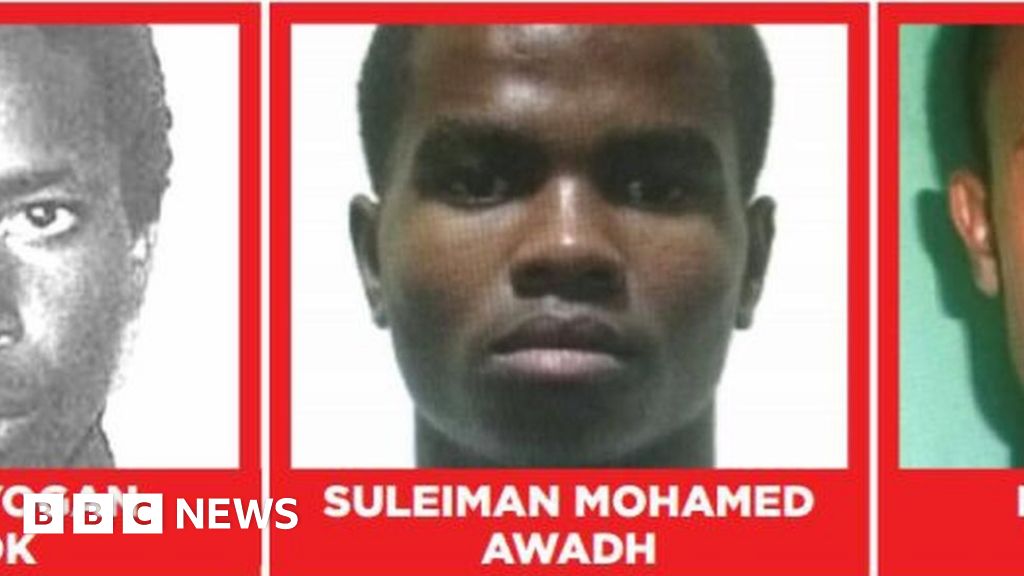
The four were identified as Suleiman Awadh aka Nakshi aka Hamza, Abdalla Salim Marumu aka Dagas aka Khalid, Issa Jabir from Kisauni and Zakaria Mohamed Athumani. All the suspects had been involved in the murder of security officers and innocent civilians in Mombasa and Kwale Counties.
The Commissioner said the four were killed after failing to surrender and opting for a violent confrontation with the police. No officer was injured.
Officials said the four who were killed had been plotting attacks in Malindi and had been in hiding for months before they were tracked by authorities.
The Malindi OCPD said the group of six men came to the village and rented a house for Sh14,000 ($140) per month.
He gave details of how police had raided a house in Kipini in neighbouring Tana River County and arrested two suspects. Following interrogation by anti terrorism officers the two led a police squad to a house several miles away at Kwa Chocha, Malindi County. A team of GSU Recce commandos was then mobilised and deployed to the location.
However, as soon as police banged the door identifying themselves and asking the occupants of the house to surrender, they opened fire and threw a grenade at the commandos. The officers took evasive action and returned fire gunning down four terrorists the Regional Commissioner said.
An individual identified as Mohamed Abdurahman Mohamed and one other suspect escaped after jumping into the ceiling board and bursting through the roof . The two sustained gunshot injuries during the shootout.
He urged administrators of public and private hospitals in Lamu, Malindi, Tana River and Ijara to be on the lookout for the suspects.
The Commissioner said five hand grenades, one browning pistol with a magazine of 7.65 ammo and one laptop with jihadi literature were recovered.
Police also found 10 mobile phones, 12 spent cartridges of 7.62 mm special, unused Safaricom and Orange SIM cards and a map showing Mokowe-Malindi-Ijara route.
LINK TO DUSIT HOTEL COMPLEX ATTACK
Following the Dusit attack the Mombasa County Commissioner directed landlords and agents to collect a database with names, telephone numbers and places of work of tenants in Majengo.
Police said Riziki met his recruiter while attending prayers at Masjid Musa in Majengo. He was a close associate of Ismail Shosi, who was shot dead on September 27, 2016, in Mwandoni, Kisauni area.
Intelligence operatives in the Kenya police said Soshi had links with Fazul Abdullah Mohammed, alias Harun Fazul, a senior al Qaeda operative who was killed in Somalia in 2011. Other than links to Fazul, Shosi was a member of Jaysh Ayman militant group operating from Boni Forest, Lamu County.
Before his death, Soshi-led a squad of radicals responsible for a series of killings targeting police officers, intelligence officers, innocent civilians and tourists in Mombasa.
Ismail Shosi
Shosi’s Gang Involvement in June 2015 Attack : NIS officer shot and killed in Mombasa
In late June 2015 masked gunmen shot and killed a National Intelligence Service (NIS) officer as he emerged from a mosque in Mombasa’s Old Town, sparking fears of a return of targeted assassination of security agents and moderate imams in the coastal city.
Mombasa police did not state the probable motive of the attack but blamed the killing on a suspect who allegedly walked around clad in flowing female Muslim robes to conceal a gun. The murder was one several assassinations targeting security officers in Mombasa since 2013. The killings were tied to jihadi militancy and a group of mosques the government claimed promote radical ideology.
Intelligence sources stated that the lead assassin in the killing, Ismail Mohamed Soshi was linked to the radical Musa Mosque in Mombasa’s Majengo area and had ties with Luqman Osman Issa, an Al Shabaab militant killed in Lamu the previous month.
The intelligence agent, 29 years old and a father of one, was shot five times in the head and limbs by two masked men at around 7 pm as he walked out of An Nisa Mosque in Mombasa’s Old Town. He died at 8.35 pm, the same day, at the Intensive Care Unit ICU of Pandya Memorial Hospital in Mombasa.
The then Mombasa County police commander declared that the fugitive Ismael Mohamed Soshi led the operation against the officer, who was an analyst attached to National Intelligence headquarters in Nairobi.”We already have one suspect in mind and he is called Ismail Mohamed Soshi who has been trained in Somalia,” the commander said on and added that “police have information on a second suspect” whom he did not name.
The commander did not speculate on the motive of the officer’s murder, only saying that he was killed in his home town”. He added that Soshi has been linked to murders of policemen and several people in Mombasa.
He had escaped numerous police dragnets by shifting residences continuously in densely built Majengo and Kisauni.
He was suspected of being behind the killing of Simon Lochodo, a police officer who was shot dead while guarding a bank in Bondeni on February 2, 2015.
Soshi is also blamed for the assassination of retired Police Sergeant Mohamed Shaad in the same area in September 2015.
He was also held responsible for the murders of a tourist in Mombasa’s Old town late in 2014.
He was also wanted for the killing of Police Sergeant Mohamed Ibrahim Ali, who was attached to the anti-terror police unit, inside a restaurant in Mombasa’s Old town on March 26 2015.
Police claim all these murders were committed using different rifles fired by Soshi, who was alleged to be a Somalia-trained assassin.“He led a cell of radical youth who alongside his brother, Ikrima Mohamed Soshi, were the main suspects behind the killings,” said Kisauni OCPD.
Arms cache
On January 4, 2016, police raided a house in Majengo, Mombasa, following a tip that Soshi and two other terror suspects – Hussein Omar Said and Kassim Mohamed Abdallah – were hiding there. While the suspects escaped, police recovered an arms cache that included a G-3 rifle and an M-4 rifle, both stolen from slain police officers.
They also recovered 345 rounds of ammunition, 15 phones and a laptop. Another tip from the public led the police to a Tana River residence in January 2016 where two men were arrested the two men in turn led police to another residence in Malindi. The occupants of the Malindi residence were believed to have been the same suspects that escaped from the Majengo house and were close associates of Soshi. Following a shoot-out with police, four suspects were gunned down,.
According to police, Soshi was killed inside the house of Fatuma Mohamed Masuo, the widow of Kassim Omolo, an alleged terrorist killed by police on June 17, 2013, in Mlaleo, Kisauni.
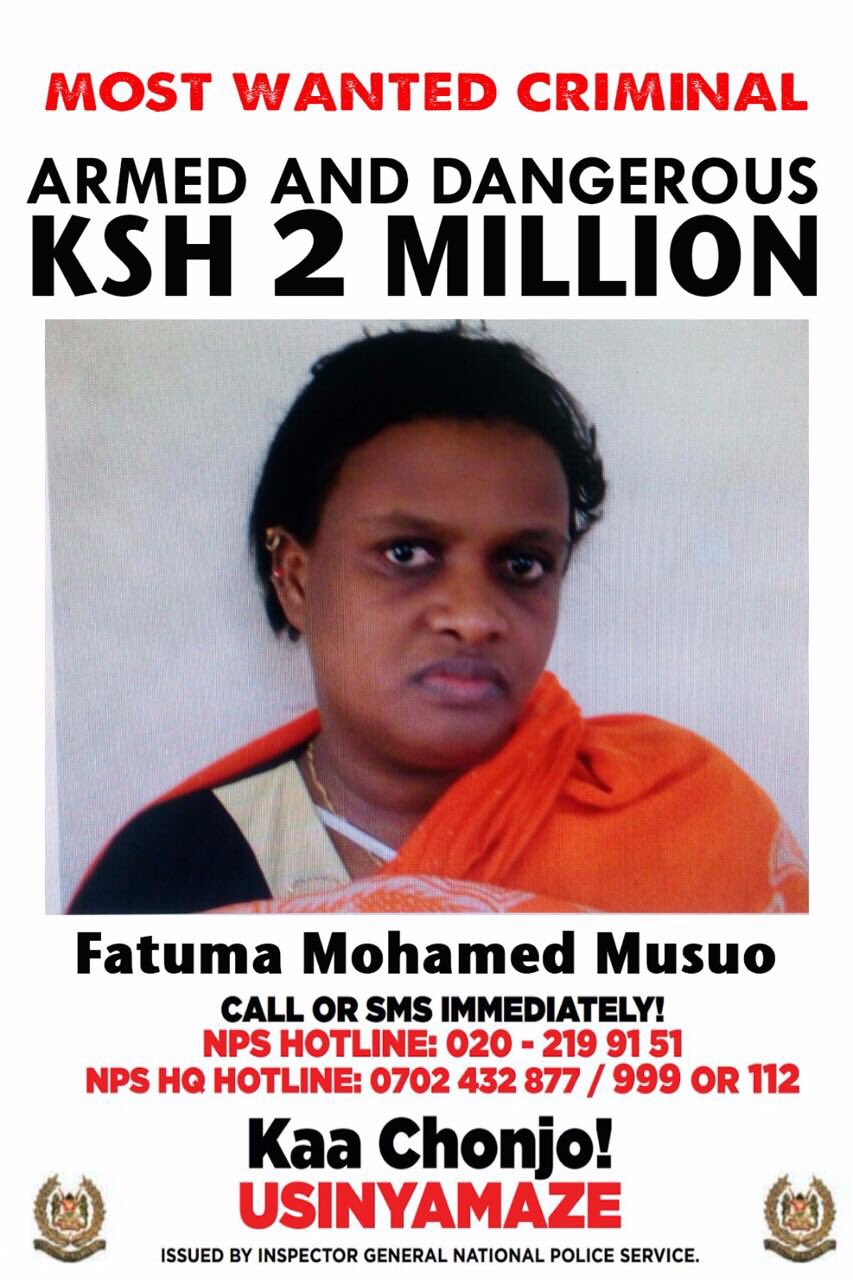
But although officers said that the slain man moved into the house two days ago, neighbours stated that Soshi, who used various disguises, had lived in the house for months. Fatuma, who lives with her three children, was not in the house during the raid. Soshi’s body was slumped in a pool of blood near a window in one the rooms in the house. His body had several bullet holes in the head and torso. Police said they recovered various weapons in the house, including a G-3 rifle, seven identity cards and 108 bullets.
Fatuma Mohamed’s deceased husband Kassim Omolo, was described by police as an al Shabaab trainer, a bomb expert and an accomplice of British terror suspect Jermaine Grant.
Omollo was killed hours apart with Salim Mohamed Nyiro, linked to al Shabaab, on June 17, 2013, in Mlaleo, Kisauni.
Police recovered two hand grenades, a pistol, an AK-47 rifle loaded with 212 bullets, and chemicals for manufacturing explosives in the house.
Police sources said he moved into the building two months before his death from Bakarani estate in Kisauni district, where British terror suspects Jermaine Grant and Samantha Lewthwaite previously stayed.
Police gun down terror suspects in Mombasa night attack
Kisauni Deputy OCPD described Kassim as “one of the most wanted terrorists” and added that the second suspect Salim was killed as he “ran towards his bedroom for his gun” indicating the suspect tried to kill security men. Security officials claimed they had received crucial intelligence from a Kenyan terrorist fugitive living in Somalia and the trove of documents recovered from Kassim following the operation conducted in the early hours.
Regarding Kassim’s killing, the Deputy OCPD said an elite police squad that has been tracking the suspected terrorist for four days managed to subdue him at his home after a brief resistance and fire exchange.
“We managed to gun down Omolo who was one of the most wanted terrorists police have been looking for, and recovered a cache of firearms, ammunition, subversive literature, explosive making devices, a digital video disc and mobile phones,” The officer told journalists at the Kisauni Police Dog Unit station.
He said police had received information that Omolo was one of the top ranked Al Shabaab commanders living in Kenya.
Coast regional police commander described the deceased as “a dangerous criminal” and alleged that he refused to surrender and instead fired ten times at police.“Because it was at night, our officers managed to get him using night vision,” he said.
According to police Kassim was firing an AK-47 rifle when he was killed. “We rarely saw him as he was not always around and has only been here for two months with his family,” a neighbour speaking on condition of anonymity said.
The five story flat in Mlaleo Magorofani in Mombasa’s Kisauni estate, where Omolo lived with his wife and their four children, all girls aged 11, 10, 5 and two bore gunshot marks signifying a fire fight before Kassim was felled.
Blood stains covered the staircases leading to his two bedrooms, which appeared to have been turned upside down as police searched the premises for evidence and intelligence clues. Local priest Bishop Alfred of the Gospel Believers Churches said he was woken by loud bangs thinking armed robbers had invaded the estate but was ordered back into his house by armed policemen. Kassim’s body was moved to Coast Provincial General Hospital mortuary.
A Senior Officer said that police killed the other suspect Salim as he tried to reach for an AK-47 rifle after being ordered to surrender and described the deceased as a terrorist. “His name is Salim Mohamed Nyiro alias Mwangazi alias Abdullahi. When we entered his house he ran towards his bedroom for his gun,” He said information seized from Kassim and informers led police to Salim amid reports that the two deceased had recently visited Somalia.
10 April 2012: Sheikh Mohammed Kassim
Linked to the Machakos Country bus blast in which six people died and over 60 were injured, Mohammed Kassim’s body was found in a Kilifi mortuary several kilometres from his Mombasa home. His relatives said he was abducted from a matatu (public transport vehicle) in Mombasa’s Likoni area before being bundled into another vehicle before his death.
13 April 2012: Sheikh Samir Khan
The body of the Muslim cleric was found dumped, and mutilated, in Tsavo Forest in Taita Taveta County along the Nairobi-Mombasa highway three days after he was reported missing. A former confidant of controversial Muslim preacher Aboud Rogo Mohammed, the 39-year-old was facing several terror related charges in Mombasa courts. He had also been accused of being behind the recruitment to al-Shabab of youths in Mombasa and Kwale counties.
27 August 2012: Sheikh Aboud Rogo

Aboud Rogo Mohammed was on US and UN sanctions lists for allegedly supporting Somalia’s al-Shabab militants. The UN Security Council imposed a travel ban and asset freeze on him, saying he had provided financial, material, logistical or technical support to al-Shabab. It accused him of being the “main ideological leader” of Kenya’s al-Hijra group, also known as the Muslim Youth Centre, which is viewed as a close ally of al-Shabab.
He was accused of using the extremist group as a pathway for radicalization and recruitment of principally Swahili-speaking Africans to carry out violent activities in Somalia. He was also facing charges of plotting terror attacks in the East Africa region. He was killed along the Mombasa-Malindi highway, while driving a vehicle containing his wife and other family members.
Following the killing, protests by radicalized youths erupted in several parts of Mombasa for a couple of days, resulting in in several people, including a security officer, being attacked and killed, as the extremist youths sought revenge. Several churches were torched, and property destroyed. The cleric preached at the controversial Masjid Musa mosque identified then as a hotbed for terrorism related activities.
29 October 2012: Omar Faraj and Titus Nabiswa
Omar Faraj, 30, a Muslim youth leader, and Titus Nabiswa, 27, a Muslim convert from western Kenya, died after what is alleged to have been a shoot-out. Coast deputy CID boss John Gachomo said the police recovered two grenades in the operation at Mwembe Tanganyika area in Majengo, Mombasa. Nabiswa, who had been arrested, led Anti-Terror Police officers to his alleged accomplice Omar Faraj, in Majengo, where it is said police encountered resistance from the latter, leading to a shoot-out. Nabiswa is said to have died in crossfire.
27 June 2013: Kassim Omollo
The Anti-Terror Police Unit described Kassim Omollo, who was gunned down in Bakarani estate, Mombasa, as an al-Shabab trainer, a bomb expert and an accomplice of both British terror suspect Jermaine Grant and a Kenyan, Faud Abubakar Manswad, who is believed to be operating from Somalia. Police reported having recovered two hand grenades, a pistol, a loaded AK- 47 rifle, and chemicals for manufacturing explosives, in the deceased person’s house. They said he was planning a terror attack in Mombasa. Police also recovered fake Kenyan currency, and chemicals used to print fake banknotes, as well as hand-written notes outlining jihad teachings.
27 June 2013: Salim Mohammed Nyiro
Salim Mohammed Nero was allegedly killed in what police described as a shoot-out between them and Nero in Kiembeni estate, Mombasa, on the same day Kassim Omollo was killed. According to the police, an AK-47, five magazines, and 145 rounds of ammunition were recovered from Nero.
3 October 2013: Sheikh Ibrahim Omar Ismail, Gadaffi Mohammed (Shebe), Omar Aburumesia, Issa Abdalla
Viewed as the immediate predecessor to Sheikh Aboud Rogo, Ibrahim Ismail was driving along the Mombasa-Malindi highway when gunmen opened fire on their vehicle. Three friends in the vehicle also died on the spot – Gadaffi Mohammed (also known as Shebe), Omar Aburumesia and Issa Abdalla.
In mid-July 2013, the National Intelligence Service accused Sheikh Ismail of activating an al-Shabab cell in Mtopanga estate in Kisauni, Mombasa, and inviting four newly trained jihadists from Somalia to Mombasa to plot “a bombing campaign” in Mombasa and Nairobi in revenge for the killing of Sheikh Aboud Rogo in 2012.
6 December 2013: Sheikh Suleiman Mwayuyu
Sheikh Suleiman Mwayuyu was shot dead when gunmen hijacked a minibus travelling from Mombasa to Ukunda. According to eyewitnesses, two occupants in a van trailed the minibus from Mombasa, before blocking it at Tiwi on the Mombasa-Ukunda road. They ordered everyone to lie down before singling out the Mwayuyu whom they shot in the head and neck at close range.
Mwayuyu was a senior al Shabaab operative and a slick operator whose base of operations was Ukunda Town. He was close to Aboud Rogo. Those who knew him said he was annoyingly polite who answered to calls of ‘Sheikh’. He only moved from his sewing machine at Msikiti Nuru area of Ukunda when he was going to one of two places- the mosque or his house.
But underneath the calm and collected look was a dark secret. Anybody who went to or wanted to go to Somalia to join al Shabaab had to get his permission. Those who felt they could go without his blessing ended up executed on suspicion of being government informers.
A family man, he thrived in marrying off his children to fellow extremists and on one occasion duped his daughter into marrying a wanted terrorist.
The bride groom, Salim Nyiro was wanted dead or alive he never showed up for his own wedding. The bride only realised this after the man who had taken the vows disappeared after the wedding only for Nyiro to appear that night. It was too late, Nyiro had already got a bride for himself.
Nyiro was not his only wanted son-in-law. With the Rogo connection, he married off at least three of his other daughters to extrimists, his sons-in-law sprinkled all along the coastal strip from Tanzania, Kilifi and Mtwapa.
1 April 2014: Sheikh Makaburi
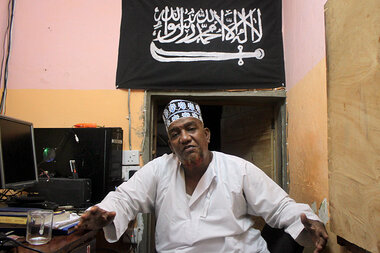
A prominent leader at the controversial Masjid Musa Mosque, the scene of frequent unrest in Mombasa, the firebrand cleric in his 50s had just stepped out of the Shanzu law courts along the Mombasa-Malindi highway (where several youths from Masjid Musa mosque faced charges of engaging in Jihadist activities), when he was sprayed with bullets at close range. He had said it was just a matter of time before he would be assassinated.
A vocal supporter of Osama Bin Laden, Makaburi justified attacks on churches and described the 2013 attack on the Westgate shopping mall in Nairobi (claimed by al-Shabab) as “100 percent justified”. Makaburi was also on a UN sanctions list. He and British terror suspect Jermaine Grant, are said to have assumed the leadership of Al-Qaeda and its affiliates in Kenya and East Africa following the 27 August 2012 killing of his former comrade Sheikh Aboud Rogo.
10 June 2014: Sheikh Mohammed Idriss

Unknown gunmen shot and killed Council of Imams and Preachers of Kenya (CIPK) chairman Sheikh Mohammed Idris in Likoni, Mombasa, as he left for morning prayers at a mosque near his home. Idriss was also the chairman of Sakina Mosque in Mombasa, one of the mosques in the city that had been at the centre of a power struggle between its officials and radical youths who wanted to take it over. Idriss had expressed fears for his life after radical youths threatened him and other CIPK members. The cleric was a leading campaigner against radicalization of the youth and jihadist teachings in mosques in the region. The then Mombasa CID boss said they suspected Sheikh Idriss was killed by people well known to him.
Many in the county believe that the killing led to the July 11 assassination of a businessman Shahid Bhutt who was cited in intelligence reports as the main financier of radicalization and terrorist activities in Mombasa Island.
On November 4, another moderate Muslim preacher, Sheikh Salim Bakari Mwarangi, who took over the fight against radical Islam from Sheikh Idris, was shot dead by gunmen in Likoni. Sheikh Mwarangi’s killing appears to have triggered the November 6, assassination of terror suspect Guti, two days later.
According to an eyewitness, gunmen accosted Guti’s car in Mwembe Tayari, they opened fire and shot him four times. He had been profiled as a terrorist.
Three days later on November 9, Mr. David Munga, who was a tutor at Mombasa Technical Training Institute, was attacked and killed by radicalised youths who were coming from the burial of the terror suspect Hassan Guti at Kikowani Muslim Cemetery in Mombasa on. The gang attacked him after he failed to identify himself as a Muslim.
11 July 2014: Shahid Bhat
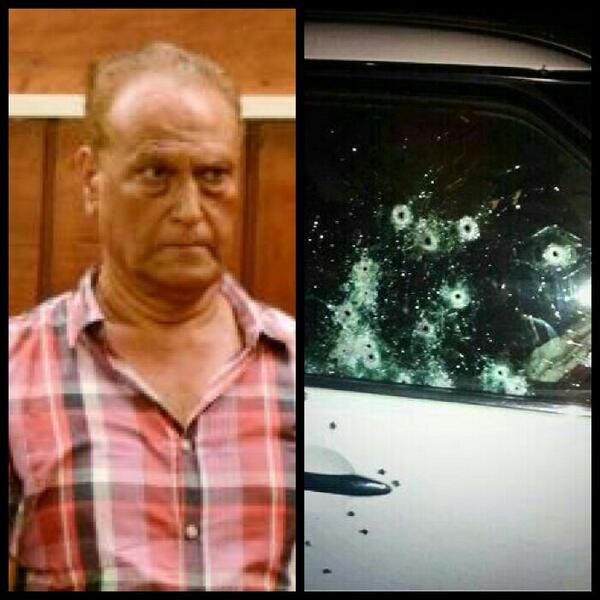
He was killed driving from Mombasa’s Moi Airport. His son, also in the car, was not hit in the gunfire. A successful businessman owning a major transport company, Bhat had earlier in the year been arrested and charged with financing terror in Coast Province. He had denied the allegation and was out on bail.
JIHADI KILLERS CAME FROM THE SAME NOTORIOUS NEIGHBORHOODS
During the tumultuous period, majority of the radicalized militant youths who attacked security officers and innocent civilians were established to have originated from or had links to low income gang infested Majengo and Kisauni areas of Mombasa.
Mombasa’s terror hubs: Majengo and Kisauni:
For most residents of the Coastal island county of Mombasa, the mention of Majengo and Kisauni triggers fear, panic and memories of high-level violent crime and terror activities.
Majengo, located 5-10 minutes from the CBD, has risen from rusty Swahili houses to modern flats and lively businesses.
Several towns in Kenya have risen in a similar manner, from shanties to skyscrapers, but very few come close to Majengo’s reputation.
Inside Majengo is Masjid Musa. The area is the centre of terror stories penned by local and foreign crime journalists since 2012 after many attacks in the country.
Kisauni, located 20 minutes from the CBD, has a blend of indigenous Muslim community, local Mijikendas and those from upcountry. Kisauni neighbourhood has been home to a medley of hardcore criminals, knife-wielding gangs, narcotics cartels and hardcore terrorists.
Many terror suspects, some who have been killed and others alive, have been linked with these two neighbourhoods.
RADICAL PREACHING
Masjid Musa in Majengo shot to prominence under the reign of slain fierce hardline imam Aboud Rogo.
The UN Security Council noted Rogo was ‘the main ideological leader of Al Hijra, formerly known as the Muslim Youth Centre’. MYC is an al Shabaab affiliate based in Kenya.
The council noted that Rogo used to exert influence over extremist groups in East Africa and was offering guidance on how Kenyan recruits joining al Shabaab can travel from Mombasa to al Shabaab strongholds in Somalia.
Before his death near Pirates Beach on August 27, 2012, Rogo was part of a terror cell that was plotting to bomb Kenyan targets over Christmas, according to police.
It is believed that during his time, Rogo successfully radicalised many youths who later crossed to Somalia for training on terror activities.
Many schoolboys from Majengo dropped out of school and engaged in drugs, while following closely teaching of their ‘mentor’. Rogo and other hardline Muslim clerics accused of supporting al Shabaab were periodically eliminated.
A police raid at Masjid Musa in 2014 netted more than 150 extremist youth and killed one. The anti-radicalisation swoop also included Kisauni’s Masjib Swafaa. Police recovered grenades, knives and radical CDs.
Masjid Swafaa is along Old Malindi Road, where police recovered petrol bombs, a hand grenade, six bullets and a flag after a raid in November 2014.
Majengo and Kisauni mosques are now reforming in a bid to drop the ‘terror tag’, and several attacks targeting highly populated areas have been foiled in the recent past in Mombasa.
Anti-radicalisation stakeholders have claimed victory over the menace, but if links of terror suspects in the recent dusitD2 attack with Majengo and Kisauni are anything to go by, these two areas could be still habouring terrorists.
Riziki’s Links With Deadly Terrorist Cell
According to a summary of his file shared by Kenyan police Riziki took part in the killings of at least two officers in October 2014, a former Kenyan counter-terrorism officer said.
The next month, police raided an extremist affiliated mosque. One officer died after his throat was cut during the operation. A suspected militant was killed, and 13 others were arrested. Riziki was there but escaped, the former officer said. He never returned, said Mohammed, a shopkeeper.
Investigators believe Riziki met his recruiter, Ramadhan Hamisi Kufungwa, at the mosque.
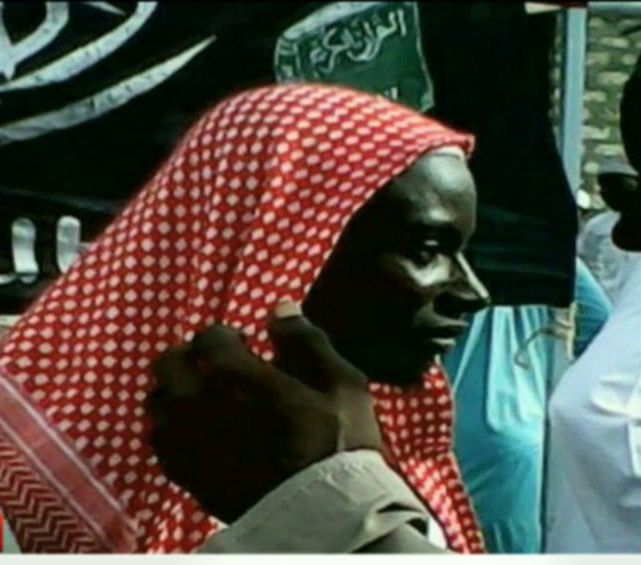
Kafungwa is a “rising star in extremist circles” and has been linked to another plot in Kenya – a plan to kidnap foreign tourists over the 2014 Christmas holiday – said a Nairobi-based security analyst who has observed militant activity at the mosque for nearly a decade.
Investigators also believe that Riziki spent much of the following years in Tanzania. It’s not clear what he did there. Tanzanian police did not respond to requests for comment.
A former senior Somali intelligence official conceded that information sharing “is not always systematic” and often depends on personal relationships between officials.
“But it happens,” the official said, citing several examples where Kenyan authorities detained and extradited militants at Somalia’s request, despite the lack of a treaty between the two countries.
Young, Kenyan and on the run, Riziki made the ideal al Shabaab attacker, said Matt Bryden, who heads the Nairobi-based think-tank, Sahan Research.
“Al Shabaab is branching out; its profile now looks a lot more like al Qaeda in East Africa than the principally Somali organisation it was for many years,” he said.
Local recruits are less likely to attract suspicion in their home countries. But they also make al Shabaab vulnerable to infiltration – by foreign intelligence agencies and the group’s Islamic State rivals. So these recruits are usually earmarked for suicide missions especially Kenyans, the Somali intelligence official told Reuters.
The attackers spent several weeks training with elements of Jaysh Al Ayman in Boni forest prior to the attack, a thickly wooded vast area on the Kenyan side of the border where al Shabaab has carried out several attacks, including beheadings.
Riziki had earlier entered Somalia, and lived in areas where the militants control territory which government forces cannot enter, making it hard to track him.
Somalia’s National Intelligence and Security Agency have also been hampered by infighting and personnel changes, insiders said. It has had three leaders in the past two years and been without a director general for the last four months.
Some Somali regional security agencies are reluctant to work with the central authorities because of political tensions between the central government and Somalia’s federal states, and because senior al Shabaab defectors hold prominent positions in the agency.
“It is full of double agents. We cannot work with them,” one Somali regional spymaster told Reuters.
A senior Somali intelligence official said his agency passed on a warning about a pending attack in Kenya in late November.
” The information was vague we told them: five guys,” he said. “They want to attack in Nairobi or Mombasa, like a hotel, tourist attraction or church.”
But such warnings are common and difficult to act on without more detail. Riziki’s name was not mentioned, so he didn’t raise any alarms when he returned to Kenya on Jan. 13. Police said he went through the border town of El Wak and took a bus to Nairobi. By the time he came back to Kenya he was an Al Shabaab operative with links to Aminiyat (Al Shabaab Intelligence & Internal Security Service), Jaysh al Ayman, Saleh Ali Nabhan Brigade, his Mombasa cell had links to Fazul Abdullah and Saleh Ali Nabhan who reported to top Al Qaeda leadership in Afghanistan. The cell was later linked with Jermaine Grant and Samantha Lethwaite during their stay in Mombasa in a period of heightened terror activities. The two were linked to the London Underground Bombings perpetrators and many other international terrorists bringing the complex global war on terror right at the doorstep of the Kenyan Security Services.
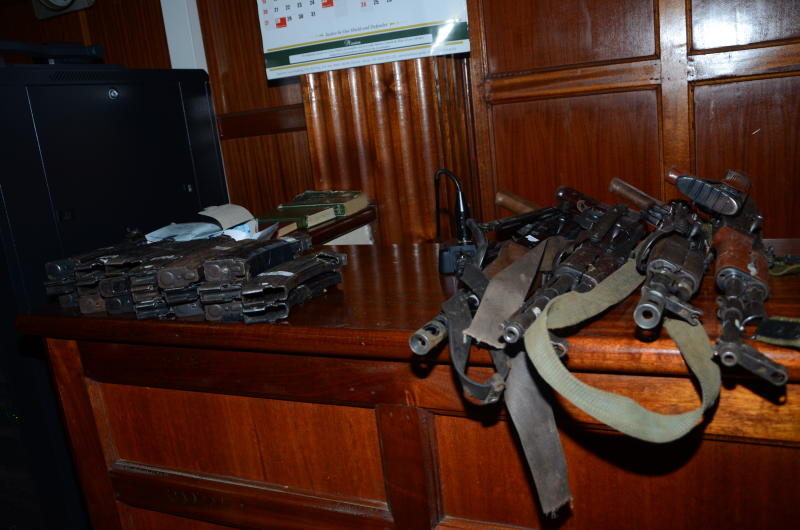
Source: REUTERS, The Star, Nation Media Group, The Standard Group






